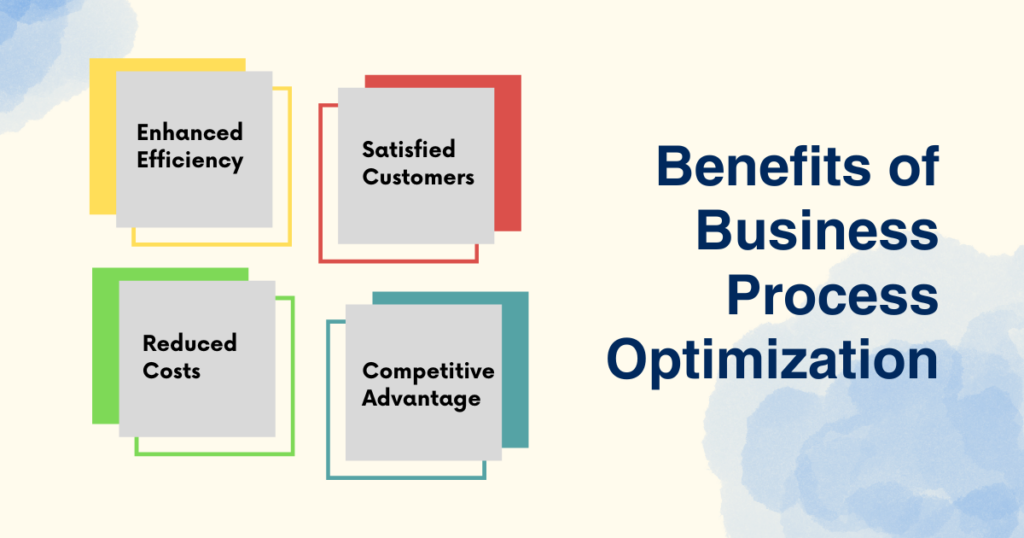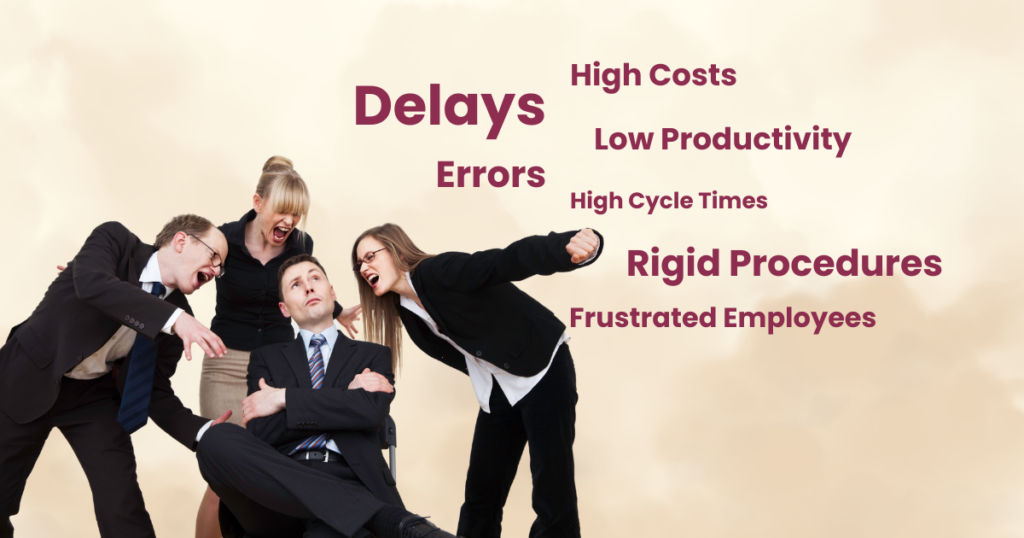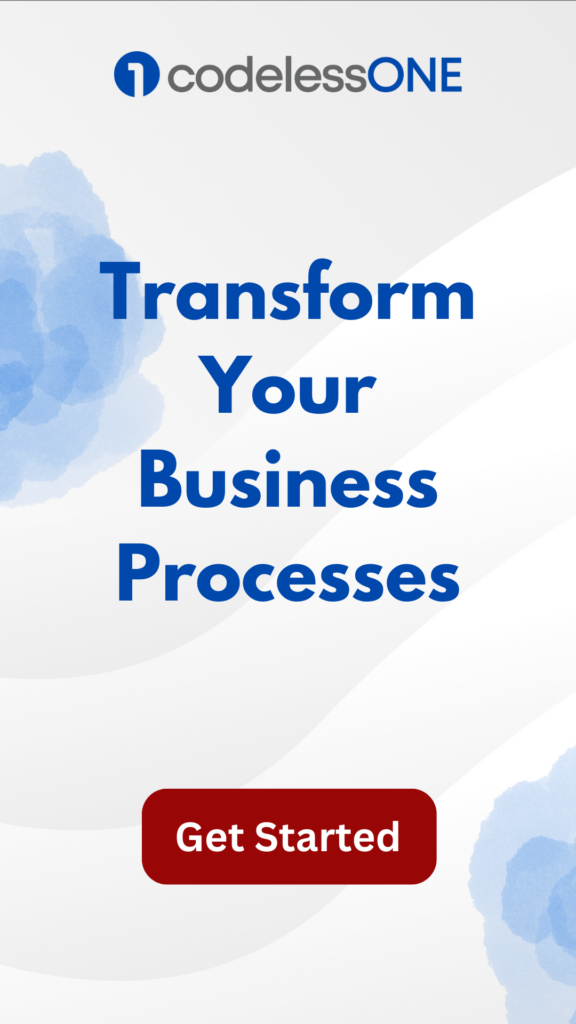Master Business Process Optimization for
Enhanced Efficiency and Growth in 2024
Table of contents
What is business process optimization?

Business process optimization is the systematic effort to enhance organizational processes’ efficiency, effectiveness, and overall performance. It involves analyzing existing workflows, identifying bottlenecks or inefficiencies, and implementing changes to streamline and improve those processes. This can lead to reduced costs, faster execution, better customer satisfaction, and increased competitiveness.
Why is business process omptimization important for organizations?

Business process optimization is vital for organizations for several reasons:
Enhanced Efficiency:
Optimized processes eliminate unnecessary steps and reduce waste, leading to smoother operations and improved resource utilization.
Cost Reduction:
Streamlined processes often save costs by reducing resource requirements and minimizing errors.
Customer Satisfaction:
By optimizing processes, organizations can provide quicker and more accurate services, enhancing customer experiences.
Competitive Advantage:
Companies that can deliver products or services more efficiently gain an edge in the market.
What are the common signs that indicate a need for process optimization within a company?
Several indicators suggest that a company might benefit from process optimization:

Delays and Bottlenecks:
Frequent delays, long lead times, or process bottlenecks are strong signals of inefficiency.
High Error Rates:
If processes result in a significant number of errors, rework, or customer complaints, optimization is needed.
Low Productivity:
Consistently low output or underutilized resources point to potential inefficiencies.
High Costs:
If costs escalate without proportional benefits, it signifies process inefficiency.
Lack of flexibility:
Inflexible processes that need help to adapt to changing market demands or customer needs.
Long Cycle Times:
Processes that take longer than necessary to complete, affecting overall responsiveness.
Low Employee Morale:
Employee motivation and engagement can be improved if employees are satisfied due to convoluted processes.
What are methodologies for business process optimization?
Lean Six Sigma: This methodology combines the principles of Lean (eliminating waste) and Six Sigma (reducing defects and variation) to improve processes. It focuses on identifying and eliminating activities that do not add value, streamlining processes, and reducing errors and defects. 🏢
Business Process Reengineering (BPR): BPR involves radically redesigning processes to achieve significant performance improvements. It often consists in questioning and rethinking existing processes’ fundamental assumptions and finding innovative ways to achieve better results.
Total Quality Management (TQM): TQM emphasizes continuous improvement by involving all employees in the process. It focuses on customer satisfaction, employee involvement, process improvement, and data-driven decision-making.
Kaizen: It is a Japanese term that means “continuous improvement.” It promotes small, incremental changes to processes over time, encouraging employees to contribute ideas for improvement regularly.
Agile Methodology: While typically associated with software development, Agile principles can also be applied to business processes. It involves iterative development, collaboration, and adapting to changes quickly, which can lead to more flexible and efficient processes.
What are some effective change management strategies when implementing process optimization? How to minimize resistance to change?
Implementing process optimization often involves changes to established workflows, technologies, and even company culture. Managing these changes effectively and minimizing resistance is crucial for successful implementation. Here are some effective change management strategies:
Clear Communication:
- Communicate the need for change: Clearly explain why process optimization is necessary, focusing on the benefits for the organization and employees.
- Provide a clear vision: Describe the desired future state after optimization, helping employees understand the purpose and potential positive outcomes.
Stakeholder Involvement:
Involve key stakeholders early: Engage employees, managers, and other relevant parties in the decision-making process to gather their input, concerns, and ideas.
Training and Skill Development:
Offer training and support: Ensure that employees have the skills and knowledge needed to adapt to new processes and technologies. Provide training resources, workshops, and mentorship.
Feedback Mechanisms:
Regular feedback loops: Establish mechanisms for employees to share feedback, concerns, and suggestions during the implementation process. Act on the feedback to show that their input is valued.
Change Communication Plan:
Develop a communication plan: Outline how information will be disseminated, who will communicate what, and through which channels.
Performance Measurement:
Track and communicate progress: Use metrics to measure the impact of the changes and share the results with employees to demonstrate positive outcomes.
Remember that resistance to change is natural and requires empathy, patience, and ongoing effort. Combining these strategies and tailoring them to your organization’s specific needs can minimize resistance and increase the likelihood of a successful process optimization implementation.
What is the Role of Technology in Business Process Optimization?
Platforms like Codeless ONE enhances efficiency, reduces errors, enables better decision-making, and promotes collaboration across an organization. Here are some key roles that technology plays in BPO and the essential features you should look for in process optimization software:
- Process Modeling: The software should offer a user-friendly interface to create visual process maps, flowcharts, and diagrams representing the end-to-end workflow.
- Process Automation: Automating tasks, approvals, and notifications based on predefined rules and triggers is essential for streamlining processes.
- Integration Capabilities: The software should support integration with various systems and applications to ensure smooth data exchange and seamless process flow.
- Process Monitoring and Reporting: Real-time monitoring dashboards, performance metrics, and customizable reports help in tracking process execution and identifying areas for improvement.
- Workflow Management: The software should allow you to define, manage, and modify workflows easily, adapting to changes in business requirements.
- Collaboration Tools: Features like comments, annotations, and discussions within the BPM software foster stakeholder collaboration.
- Data Analytics and Visualization: Advanced analytics tools within the BPM software help visualize process data, identify trends, and make informed decisions.
- Version Control: To ensure that changes to process models are tracked and managed effectively, version control features are crucial.
- Security and Compliance: The software should offer robust security features to protect sensitive process data and ensure compliance with regulations.
- Ease of Use: An intuitive interface and user-friendly tools are essential to encourage adoption across different teams and skill levels.
- Scalability: The software should be able to handle the evolving needs of your organization as it grows, both in terms of processes and users.
- Mobile Access: Mobile compatibility allows users to access and manage processes from anywhere, increasing flexibility and responsiveness.
- Audit Trail: Detailed logs and audit trails help in tracking changes, approvals, and user actions, which can be important for compliance and accountability.
- Customization and Flexibility: The software should be customizable to accommodate your organization’s unique requirements and processes.
Choosing the right BPM software involves:
- Evaluating your organization’s needs.
- Considering the scalability of the software.
- Ensuring that it aligns with your business objectives.
It’s essential to select a solution that not only meets your current requirements but also has the capability to support your future Business Process Optimization initiatives.
Optimize Business Process with Codeless ONE
Book a free personalized demo now.




